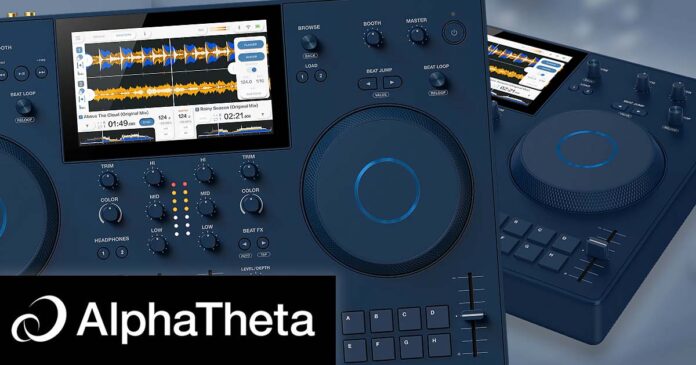Now this device was quite a surprise for me. Mainly because I didn’t expect to see this kind of hardware from Pioneer DJ anytime soon, but also because of the fact that it is the very first DJ controller released under their new brand name – AlphaTheta, which Pioneer DJ is seemingly transitioning to. Read on, as I’m about to get into details here!
Check out also my detailed review of the Pioneer DJ OPUS QUAD here! – Pioneer DJ OPUS-QUAD Gear Review – An Honest Take
This web portal is reader-supported, and is a part of the Amazon Services LLC Associates Program and the eBay Partner Network. When you buy using links on our site, we may earn an affiliate commission!
First, The Specification
| Device: | AlphaTheta OMNIS-DUO |
|---|---|
| Photo: | 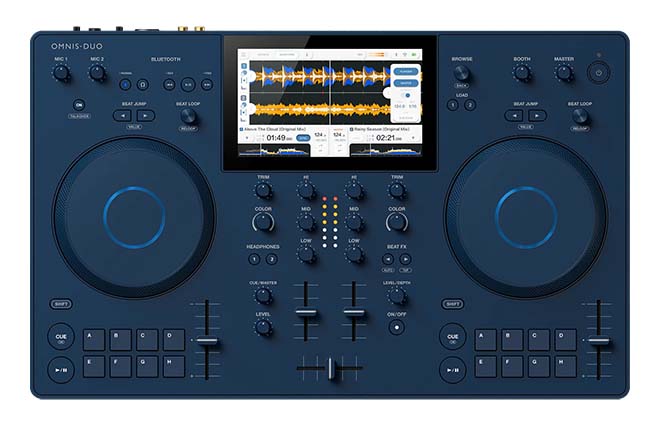 |
| Price: | – Check price on Amazon – Check price on Ebay – Check price on Guitar Center |
| Mixer Channels: | 2 |
| Standalone capabilities: | Fully standalone unit. |
| Connectivity: | Wi-Fi for Rekordbox integration / track loading, Bluetooth for additional audio input & output. |
| Control layout: | Non-standard. |
| Dedicated software: | Compatible with Rekordbox, upcoming Serato DJ Lite & Pro (paid upgrade). |
| Inputs: | 2x microphone input (XLR & 1/4 inch TRS Jack, 1/4 inch TRS Jack) |
| Outputs: | 1x balanced XLR (master), 1x RCA (master/booth), headphone out. |
| Audio FX: | 14 in total, 6 Sound Color FX, 8 Beat FX. |
| Dimensions (WxDxH): | 500 x 307 x 71 mm | 19.7″ x 12.1″ x 2.8″ |
| Weight: | 4.6 kg | 10.1 lbs. |
| Battery: | Li-Ion battery | 47.52 Wh | ~4-5h use / ~3h charge | can be charged by any USB-C Power Delivery 45W charger (included). |
The Touch Screen
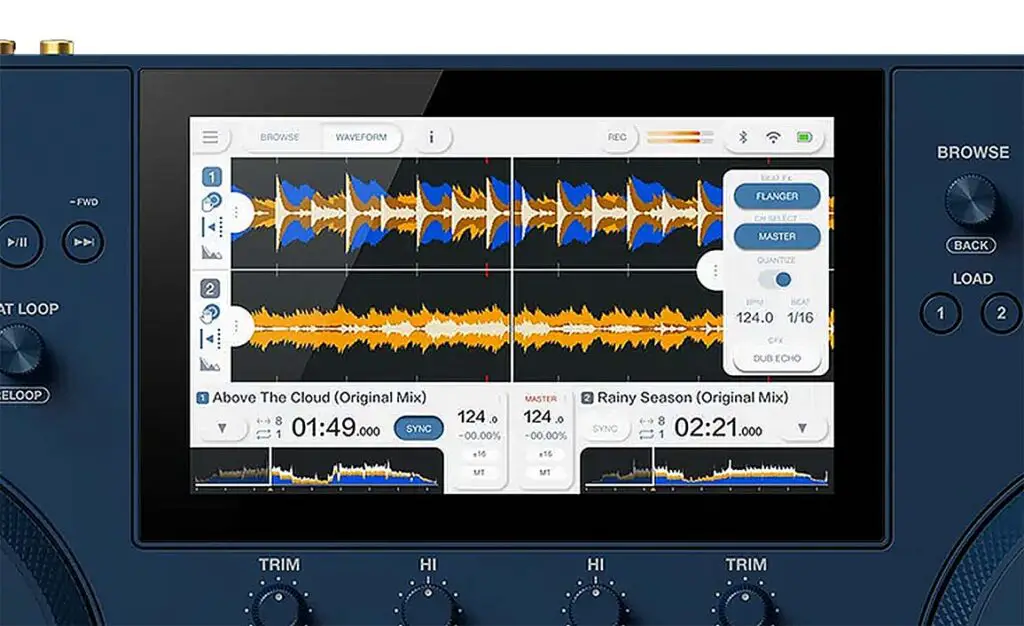
The central, and the most important part of the OMNIS-DUO is its touch display which you will use for loading your tracks onto the decks, switching your audio sources, editing your playlists and managing your music library. It’s also the place where you’ll be able to se the main track waveform view during your mixes.
The display, or rather the OS, has a neat option of adjusting the screen’s brightness, and switching between the light and dark mode, which you can use to your advantage when transitioning from a dark club interior to a sunny outdoors setting (the latter for sure being closer to the device’s intended use).
Physical Controls and The Front Panel
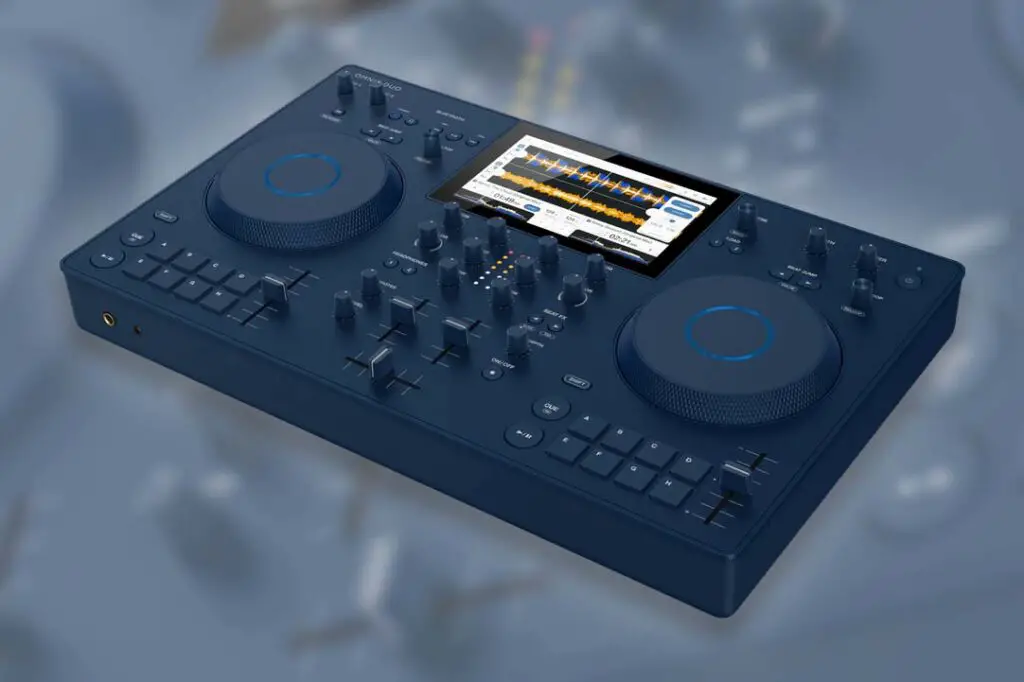
Performance Pads on the OMNIS-DUO are small, clicky, have a nice rubber finish, and the most important thing – they can only be used for hot cues and loop control – 8 hot cues per deck, no other fancy performance pads modes here.
The jog wheels do have a nice feel, however there are nothing to write home about. No adjustable tension, or anything like that, however you can adjust the digital vinyl break speed inside the system settings.
When it comes to the basic controls the device offers, you have access to traditional beat jump buttons, a knob for controlling your loops, library browse knob, FX controls (more on these later) and rest of the necessities present on most DJ controllers out there.
The pitch faders are small, but you can change the pitch range they cover from the device’s touch screen from ±6, through ±16, to the WIDE setting. There is a key lock feature here under the master tempo switch available in the pitch fader settings menu, however the OMNIS-DUO notably does not allow you do play around or change your songs pitch, or sync the keys of two tracks. The only thing you can do is to turn the master key lock on and off.
And yes, the SYNC feature is also there, however it doesn’t have a dedicated physical button. It can only be turned on using the touch display (which is a common theme here).
If I’m honest, I’m not a huge fan of the new design choices that Pioneer DJ makes starting with the beginning of the FLX series (Pioneer DDJ-FLX6 – check out my review here), and the thing I dislike about the mixer on the OMNIS-DUO the most have got to be the almost completely smooth mixer knobs and small “sleek” fader caps. While this might be a matter of personal preference, I really do think that these controls feel genuinely less pleasant to use, and are much less satisfying than the more pronounced controls of for instance the Pioneer DDJ-1000.
Check out also: Pioneer DDJ-1000 vs. DDJ-1000SRT – Is The Software The Only Difference?
Features Available Via The Touch Display
As I’ve already mentioned, many settings and functions of the OMNIS-DUO can be accessed only via the touch screen. These include the mentioned sync function toggle, slip mode and jog wheel modes switch, and many more. While that might not be a popular take, I’m always more of a fan of physical buttons, wherever placing them makes sense and is overall possible.
The library management nicely thought out in the OS, and I didn’t find any real problems here. You can do live previews of the tracks, just like on a CDJ-3000, there are extensive track filtering options in the main menu, and a neat search feature with an on-screen keyboard.
Setting tweaks like the crossfader curve, channel fader curve, headphones cue modes (Mono/split or Stereo), quantize beat values, EQ/ISO equalizer modes, waveform colors (Blue, RGB or Classic 3-band), waveform position (Left or Center), vinyl break speed and microphone EQ are also available after a few more clicks inside the system’s settings menu. There are also some more Advanced Settings that you can access in the additional Utility menu.
I personally find some of the smaller toggles on the touch display interface a little bit tricky to trigger on the first touch, especially when trying to activate them fast (despite the thoughtful enlargement of the most important switches in the UI), but I’m sure that can come easier with some practice.
Available Audio FX
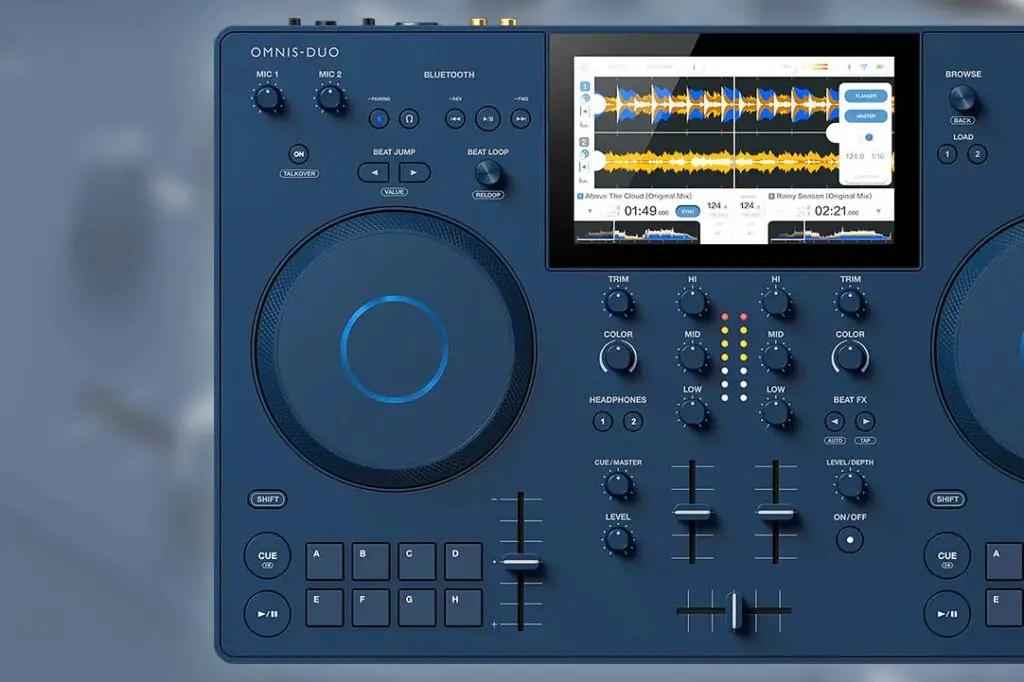
The whole set of audio FX on the OMNIS-DUO is based on the Sound Color FX and Beat FX you can find on the Pioneer DJM-900NXS2 mixer.
You can control these effects using a small stripped down version of a Beat FX strip on the right side of the mixer section, and the Sound Color FX knobs on the mixer itself.
The available Sound Color FX are as follows: Space, Dub Echo, Crush, Sweep, Noise and Filter, which gives you 6 Sound Color FX in total.
The Beat FX you can use are: Delay, Echo, Trans, Flanger, Spiral, Reverb, Pitch and Roll, so 8 effects total.
This means that you can access the total of 14 different audio FX when using the OMNIS-DUO in standalone mode. You can set the Beat FX to affect the master output, channel 1 or 2, or the microphone input. Nothing is really missing here, all the boxes checked.
Bluetooth Input & Output
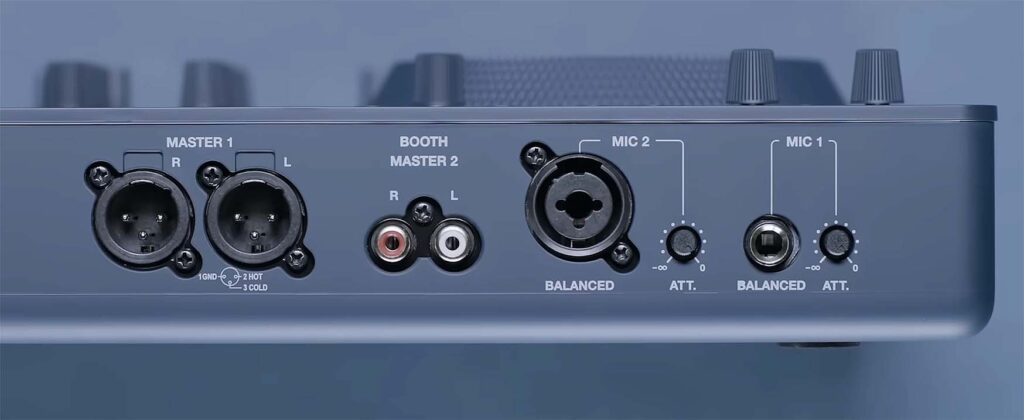
Aside from the main balanced XLR (master) & secondary RCA (booth/master) outputs and two microphone inputs with small gain control knobs on the back of the device (including an XLR/TRS jack input), the AlphaTheta OMNIS-DUO also features a Bluetooth input and output functionality, which is worth taking a closer look at, especially on a device meant to be used on the go.
One of the most interesting features however, at least for me, is the ability to record the incoming audio transmitted via Bluetooth, to later use it in your mixes on one of your decks, just as you would with a regular loaded track. More on that later.
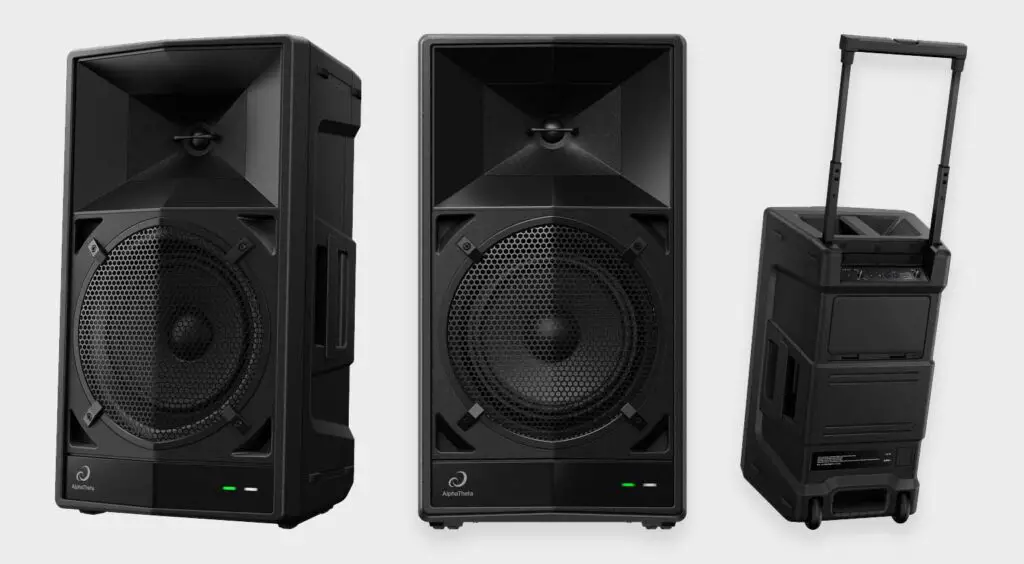
The Bluetooth output of the OMNIS-DUO is meant to be used with the new WAVE-EIGHT Low-Latency SonicLink Bluetooth Speaker from AlphaTheta, as most if not all regular Bluetooth speakers would not be able to transfer audio with latency low enough to be able to DJ live while using them.
Mind that even with low latency devices, there still is a minimal lag at play in most cases. For now the WAVE-EIGHT is one of a few Bluetooth speakers on the market that can be comfortably used for mixing live, and it achieves that by being sold with an external low-latency audio transmitter, allowing for low latency communication between any DJ controller or audio device and the WAVE-EIGHT speaker receiver.
If you wanted to however, yes, you can pair the OMNIS-DUO with a regular Bluetooth speaker, albeit the latency would make mixing tracks in a timely manner very difficult if not downright impossible in certain scenarios.
Audio Sources – Quite a Few of Them
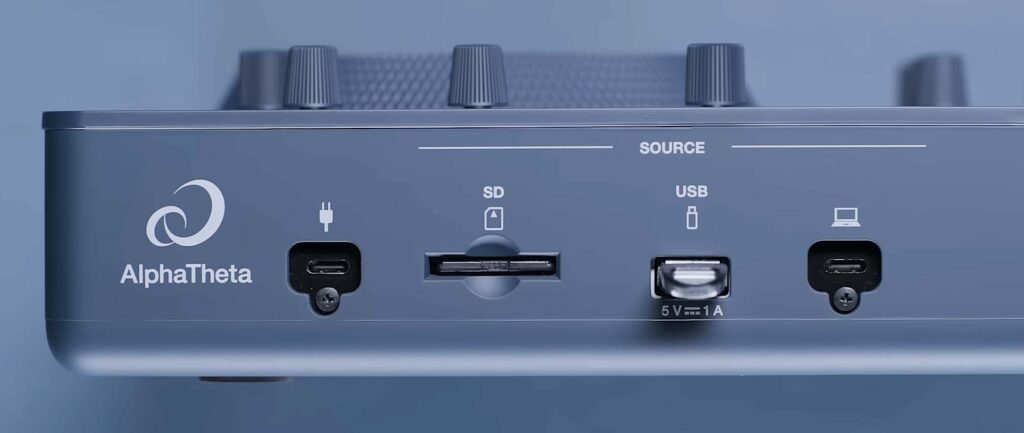
The AlphaTheta OMNIS-DUO is able to source music from various different inputs including:
- Your Laptop – When it’s used in wired mode with your PC or MAC, but also wirelessly when connected and synced with your Rekordbox library.
- USB-A Flash Drive – Just export your favorite songs to a thumbdrive using Rekordbox software, and you’re all set.
- SD Card – For people like me, who don’t like having a large flash drive sticking out of the device ready to be broken off, you can safely put a memory stick containing your songs in the SD card slot on the back of the device – microSD card adapters will also work here. Remember that the files still have to be exported onto the card using Rekordbox.
- Bluetooth Sound Recording Feature – This is quite an unorthodox approach, but the OMNIS-DUO lets you connect a Bluetooth device to it, for instance your smartphone, then play virtually any song you want on your phone, and as the song goes by, it will be transmitted live and temporarily recorded to the DJ controller’s memory. Then, you will be able to use it on one of your decks as it gets registered. Downsides to that? First, you have to play through the whole song on your phone if you want the OMNIS to register it in its entirety. Second, when you stop the playback on the phone, or the played song stutters in some way, the same stutter will be reflected by the audio coming to the OMNIS-DUO, which can quickly ruin your mix.
An important information here is that the USB-C input used for powering the device is separate from the one used for connecting to your computer. Nice little detail I can appreciate.
No 3rd Party Streaming Services Support
For now, the OMNIS-DUO does not support any 3rd party streaming services, which in that matter makes it inferior to one of its main rivals – the Denon DJ Prime GO. Interestingly enough, the Pioneer DJ OPUS QUAD is also behind on that.
This is quite curious, considering the general shift towards sourcing the music played live from subscription-based third party music streaming services with the newer DJ software and standalone controllers. A real missed opportunity if you ask me.
Compatible DJ Software
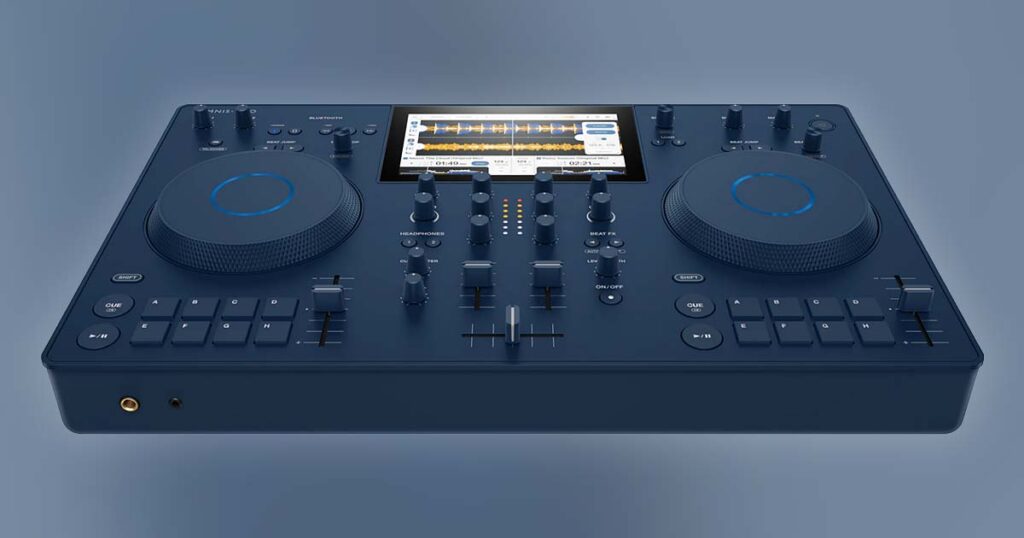
The OMNIS-DUO out of the box is compatible with Rekordbox, and will be compatible with Serato DJ Lite, with the possibility of a paid upgrade to Serato DJ Pro. This means that you can not only use it in the standalone mode, but also mix when connected to your laptop. Pretty standard for most standalone DJ controllers.
With Rekordbox, you can make use of the controller’s built-in Wi-Fi module to connect to your home network and almost seamlessly load the tracks from the Rekordbox library on your computer’s drive onto the controller used in standalone mode. All this without any cable connections and with relatively quick setup. A pretty nice feature to have.
Of course, the support for CloudDirectPlay is also there, allowing you to stream your tracks directly from a Dropbox account.
You might also like: Serato DJ Lite vs. Pro (12 Most Important Differences)
The Battery Life
AlphaTheta OMNIS-DUO can run on battery power giving you about 4 to 5 hours of playback on full charge, however as always this will depend on how you use the device. The charging time is around 3 hours, and the device can be charged using a powerbank with sufficient output wattage (min 45W – like the 45W INIU Portable Power Bank).
You can also charge/power the controller with the 45W USB-C power supply which comes in the box, or any other power USB-C adapter with matching parameters.
In the main settings menu you’ve got access to the “ECO mode”, which is essentially a power-saving setting that you can activate when you’re running low on juice. In the ECO mode the display brightness is lowered, and the wireless connection modules are disabled.
An Alternative: Denon DJ Prime GO

I said I’ll be honest, and I really am. If I were to choose between the AlphaTheta OMNIS-DUO and the Denon DJ Prime GO, which is currently pretty much its main rival, I’d most probably go with the Denon DJ controller instead.
The Denon DJ Prime GO while having smaller jog wheels and only 4 hot-cue pads, supports many 3rd party music streaming services, runs on the Engine OS which is equally fun to use as the solution from AlphaTheta, and is more portable, being a little bit smaller in size. I also simply prefer its approach to the front panel design and the control layout.
But the most important thing for me – the price. Denon DJ Prime GO is a much more affordable alternative, while retaining pretty much the exact same feature set that the OMNIS-DUO has to offer. Be sure to check it out if you’re considering getting yourself a brand new DJ controller for on the go mixes.
Pros & Cons
AlphaTheta OMNIS-DUO
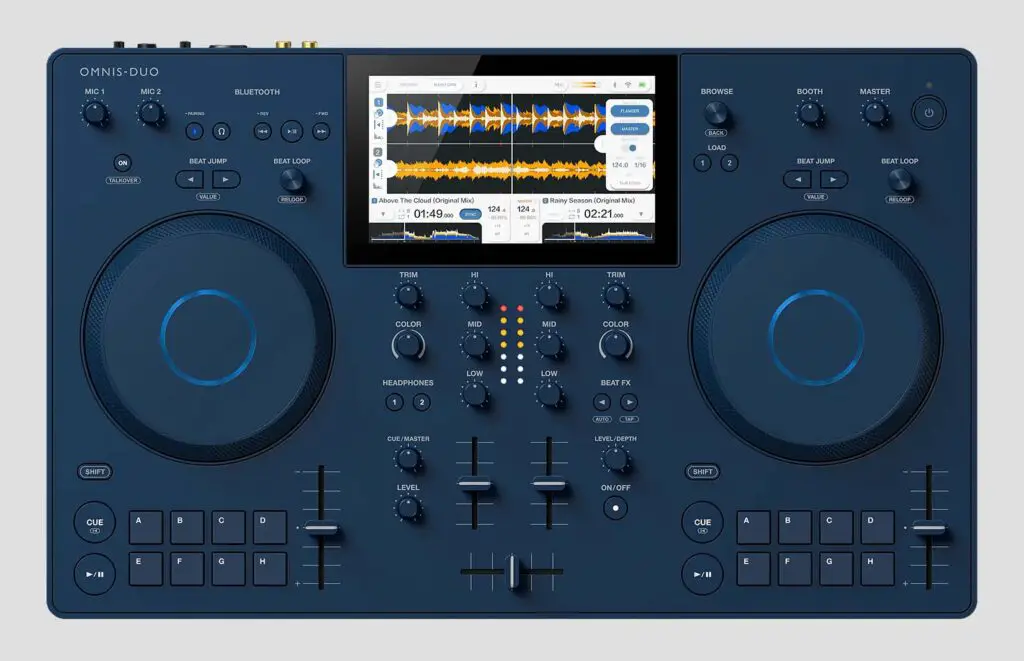
Pros:
- Updated sleek design, minimalistic approach to the controls layout.
- Great quality touch screen and well thought out OS.
- Simple non-complicated mixing workflow, great for beginners.
- Ability to load up files from Rekordbox software on your computer wirelessly.
- Full set of balanced XLR & RCA outputs, and two microphone inputs.
- Can be powered using a 45W power bank, or virtually any 45W USB-C charger.
- A lot of different ways to get your music onto the device.
Cons:
- The very much steep price.
- Many controls are are accessible only via the touch display.
- No support for any 3rd party music streaming services.
- The Bluetooth audio input
- For near zero-latency Bluetooth audio output you have to own the WAVE-EIGHT SonicLink Bluetooth Speaker, or a BT speaker offering equally low audio latency.
- There exist cheaper and arguably equally good alternatives, such as the previously mentioned Denon DJ Prime GO.
The Final Question: Is This a Good Deal?
And my final answer is: if you can afford it, the AlphaTheta OMNIS-DUO has all you need as a basic small-factor standalone DJ controller, however there are many other pieces of hardware out there for the same or lower price, which are equally good or better than this one.
For a few hundred dollars less, I wouldn’t hesitate one bit to say that this is a rather interesting choice for a mobile DJ interested in mixing on the go, but the price is really holding me back here. In any case, the OMNIS-DUO is a pretty capable device presenting a few interesting solutions and features to its users. I just don’t think that it’s best fit for me.
The Sudden Branding Change? – AlphaTheta
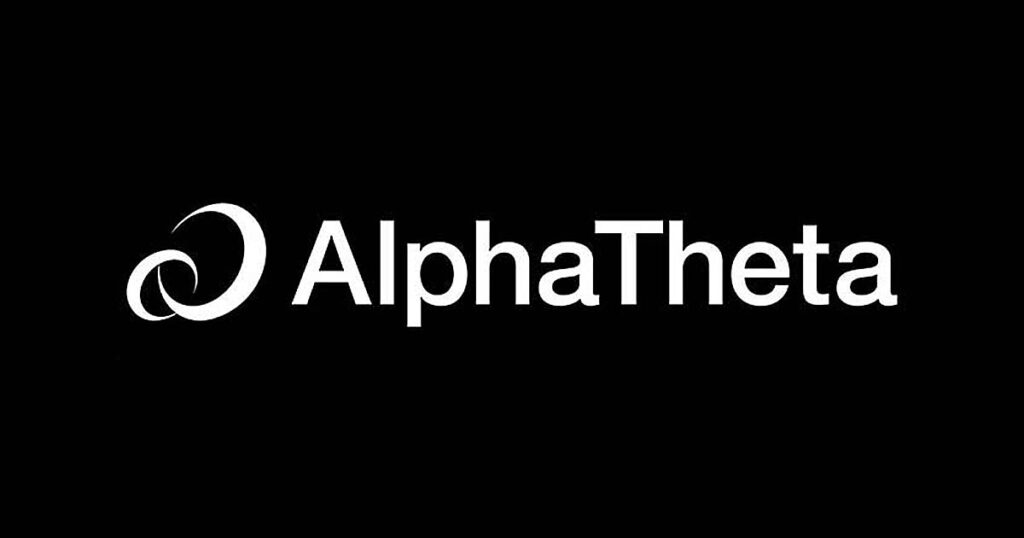
One last thing that I feel like has to be addressed here is the Pioneer DJ branding change introduced with the release of the OMNIS-DUO. If you want to know more about this rather sudden decision which surprised me quite a bit, check out my last article about the recent introduction of the first AlphaTheta branded products. Did you know that Pioneer DJ actually changed its name to AlphaTheta a few years back?
Want to know more? – Why Did Pioneer DJ Change Its Name To AlphaTheta? (They Did That a Long Time Ago!) Read on!

